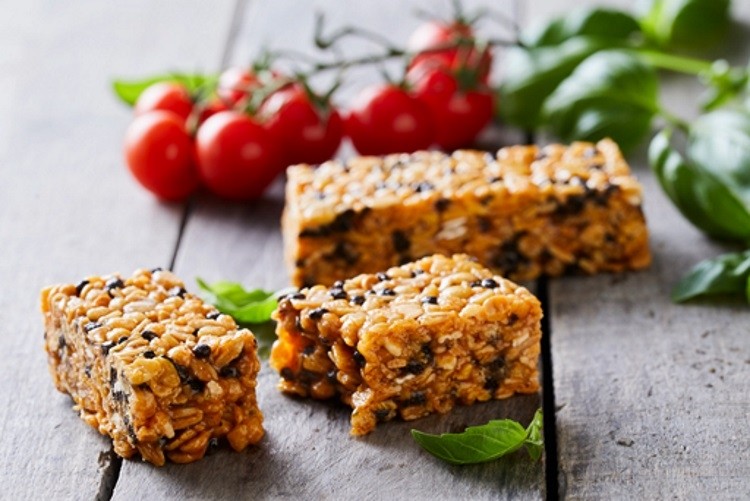How to create protein bars that deliver a complete sensorial experience

‘Choosing the right protein for your snack bar’ examines the rapidly expanding market for snack bars that provide a quality hit of protein and a wide variety of new tastes. It also reviews the latest trends in consumer preference, regional regulations in formulation and the application of plant, dairy and mixed protein in new bar concepts.
Throughout the pandemic, the consumer’s appetite for snacks has, in some cases, increased tenfold – be it for a quick and convenient source of nutrition or to provide comfort.
However, reports of widespread illness and death have naturally left consumers feeling vulnerable and this has accelerated a desire for healthier snacks as a means to support long-term health goals.
A survey by FMCG Gurus in June 2020 found that 80% of consumers around the world plans to follow healthier diets as a result of COVID-19, with 41% of them noting they will be rooting out products with added functional benefits.
This bodes well for products fortified with protein. A rising star in the functional ingredient arena, protein has moved well beyond specialised nutrition and is now thriving in the general wellness space.
Long before COVID-19, snack bar launches featuring high/added protein claims were on the increase – from 17% in 2015 to 33% in 2019 – and are expected to push the $6bn category even further.
Feel good factor
“We believe the upward trend in demand for protein-fortified snacks will continue over the long term, driven by rejuvenated consumer interest in healthy eating and underpinned by dynamic innovation in the category,” said Mindy Leveille, strategic marketing manager, Protein, Kerry.
“Sales of snack bars with high/added protein claims continue to rise as consumers respond to a ‘feel good’ factor around purchasing snacks that pack an added nutritional punch. Protein-added snack bars are a quick and convenient way for busy people to get a tasty nutrition boost.
“Our R&D white paper provides a treasure trove of information designed to assist bar manufacturers as they search for just the right protein for their snack bar formulations.”
Complex challenges
According to Kerry’s white paper, there are several considerations to keep top of mind for bar product development.
Firstly, consumers want alternative plant protein sources.
Although there is a growing trend toward ‘flexitarian’ proteins bars that incorporate both plant and animal protein – dairy remains the most desired protein source in bars – there has been a rise in allergies and intolerances. This is driving the free-from trend, with 50% of protein devotees noting that ‘dairy free’ is the most important consideration when it comes to purchasing a snack.
A higher number of consumers (71%) also associate plant proteins with health versus the 42% who associate animal derived protein as healthy.
While sustainability and animal welfare are key factors for 62% of protein users, most refuse to compromise on taste and texture.
Mintel data reveals that as many as 75% of consumers believe taste is the most important factor, which is a particular challenge for protein bar producers as surveys found products with health claims are less likely to be perceived as ‘good tasting’ compared to those without such assertions.
Consumers are also looking for clean label and low sugar options.
Historically, protein bars are perceived to have a high sugar content and be highly processed, pressurising brands to reformulate with simpler ingredients, and be more transparent about recipes and on-pack information.
Snack bar launches with a natural claim peaked in 2017 at 58% - and continue to remain at that level – however, many still contain ingredients consumers seek to avoid, such as emulsifiers.
“There are many emerging ingredients and flavours to apply in protein snack bars, ranging from coffee cold brew to mango to tomato & basil, with the latter being a savoury alternative to sweet cereal bars,” said Leveille.
Driven by the consumer mindset toward cleaner formulation, other key claims include organic, gluten free, ethical and grass-fed (when it comes to animal proteins obviously).
Protein bar formulation
The paper also discusses the key considerations when it comes to formulation.
“Most protein bars are manufactured with a cold press/extrusion process. To ensure microbial stability and safety, they have intermediate to low moisture levels, with a water activity (Aw) generally below 0.85 and ideally below 0.60.
“Protein bars are made of hydrophilic and hydrophobic constituents, making them heterogeneous systems that tend to be unstable and prone to phase separation over time. This can result in modifications of the product over its shelf life – hardening, for example, is a common issue with protein bars.
Many parameters can be modulated to design nutritionally balanced products with great mouthfeel, taste, texture and high stability.”
The paper then delves into the building blocks of protein bars; the types of proteins available and the balance between low to high water binding proteins; bulking agents and sweeteners; and other inclusions. It also looks at the requirements for protein nutritional claims in different geographic regions; and the Protein Digestibility Corrected Amino Acid Score (PDCAAS), which is taken into account to calculate the dietary reference value in the US. The latter has also increasingly popped up on the radars of consumers in Europe and Asia.
According to Kerry, the assembly of the different building blocks of protein bars that deliver a complete sensorial experience to the consumer is now an art, presenting a real challenge for manufacturers.
‘Choosing the right protein for your snack bar’ will make it just that little bit easier. The white paper can be downloaded here.










